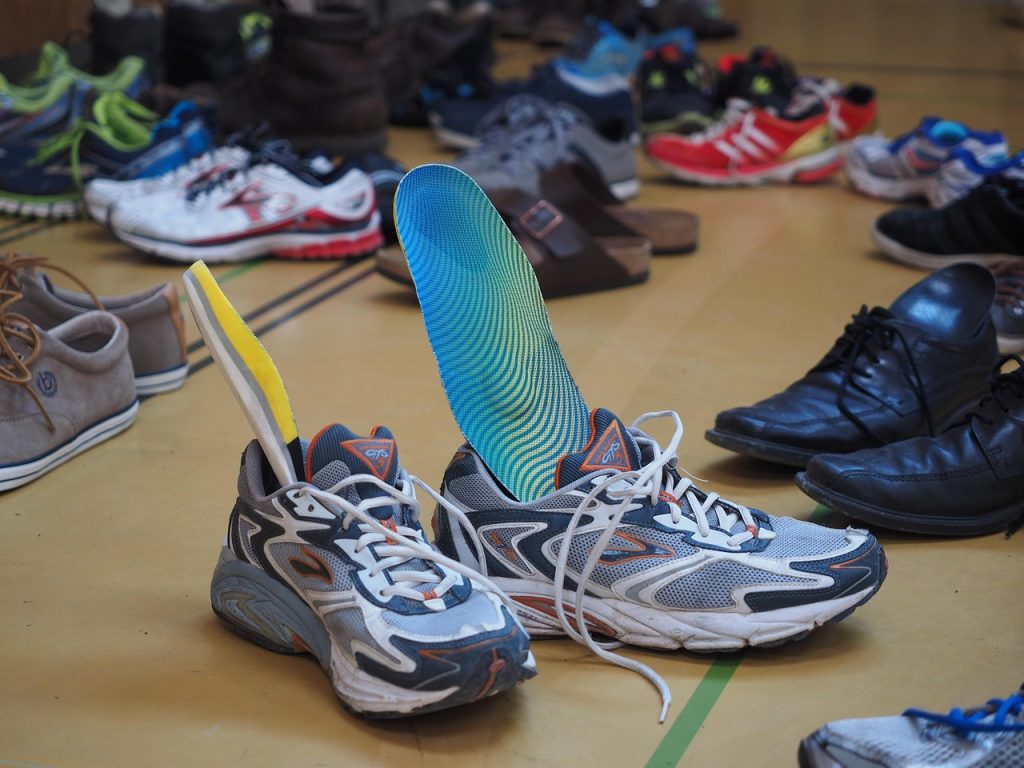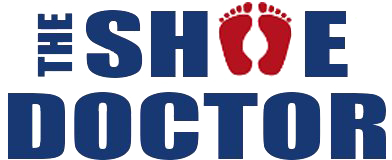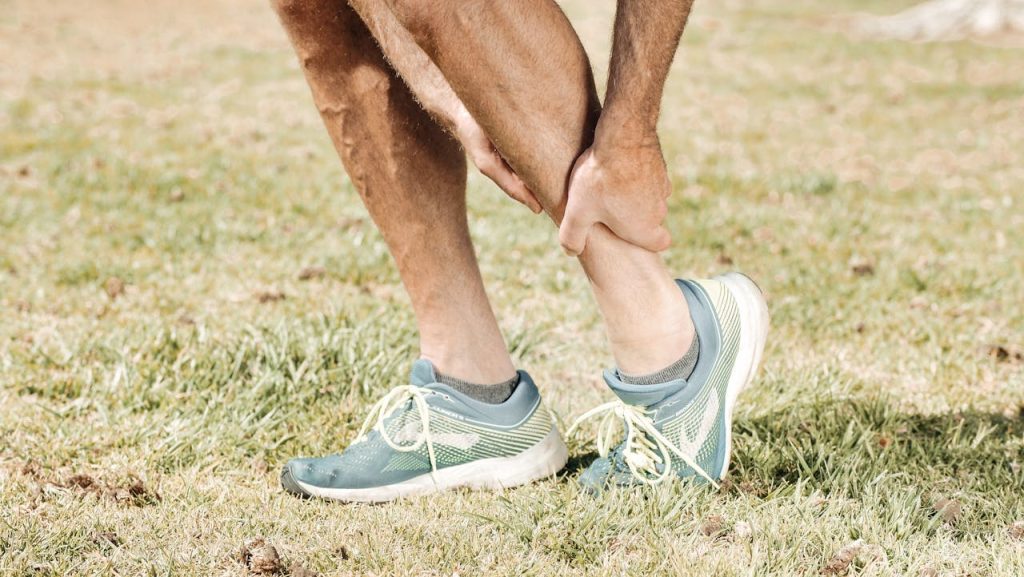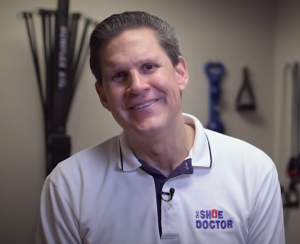Orthotics can assist with foot issues by relieving discomfort and providing additional support, but in the majority of cases they don’t address the underlying issue permanently. In many cases, doctors prescribe orthotics for problems such as flat feet, plantar fasciitis, or bunions… to relieve stress and aid in walking. A lot of times those folks are less painful, more mobile, but the foot itself doesn’t actually change all that much with just orthotics. Certain foot issues require more attention, such as physical therapy or surgery, to address the underlying problem. In the following sections, discover how orthotics work, which foot problems require more than support, and what habits maintain foot health in the long run.
Key Takeaways
- Orthotics provide essential advantages including optimized alignment, enhanced cushioning, pressure redistribution, and support. Their impact varies with proper, consistent utilization customized to the user’s specific foot condition.
- Orthotics can go a long way toward both relief and long-term management, but they won’t necessarily fix all underlying issues, and often work best as part of a treatment plan.
- Custom orthotics provide the best fit and specific biomechanical adjustment, particularly for more serious foot issues, while over-the-counter alternatives can work for less severe issues and are more convenient and inexpensive.
- Orthotic material and proper footwear are important factors to consider, in terms of comfort, durability, and overall effectiveness–another reason to seek professional assistance for best results.
- By combining orthotics with consistent foot strengthening exercises and slow adaptation, you can get the most functional bang for your buck and encourage lasting foot health.
- Continuous monitoring, professional evaluation, and adjustment are necessary to address limitations, ensure proper fit, and respond to any changes in foot condition over time.
The Core Function of Orthotics
Orthotics are shoe inserts designed to assist when the foot flops around in all the wrong places. They have two major jobs: to cushion the foot and give comfort, or to fix the way the foot moves. Orthotics matter because if one part of your foot is out of alignment, it can throw off the rest. You have custom orthotics, crafted from raw materials and a 3-D scan of your feet, and then you have store-bought, off-the-shelf ones. Both types can assist with foot and ankle pain, but custom ones fit better. Support and distribute pressure with orthotics help for arthritis, bunions, plantar fasciitis and other foot problems.
- Encourage proper alignment of the foot and ankle, relieving stress on other joints.
- Provide padding to absorb impact and reduce stress with every stride.
- Distribute force around the foot so that no location bears the full weight.
Support
Strength from orthotics keeps the foot strong during everyday activities. This permits muscles and joints to function properly, maintaining low strain.
When properly supported, the potential for overuse or sprains decreases. Orthotics stabilizes the foot, so walking or running feels more secure. This is crucial for arthritis or foot pain sufferers. Assistance prevents it from worsening, particularly among those who stand or walk for extended periods.
Alignment
Orthotics correct bad foot posture which then helps the entire body align more effectively. By steering the foot to a healthy position, orthotics promote better body movement.
They assist the foot in its natural motion, facilitating your walk or run. This efficiency can assuage pain and enable individuals to move painlessly. Issues like flat feet or high arches aren’t as likely to do damage when the alignment is correct.
Orthotics treat the distribution of weight, which takes pressure off of tender areas and that can help prevent pain from returning.
Cushioning
- Cushioning absorbs shock from walking, running, or standing.
- Pads sore spots, making shoes more comfortable.
- Lowers risk of calluses, sores, or ulcers.
- Lets feet move more naturally while still being protected.
The extra cushion assists those with sensitive feet like diabetics or people with arthritis. It keeps feet secure and cozy, especially in tough footwear.
Redistribution
Orthotics shift pressure away from painful locations, which aids comfort and pain. They distribute the load so that no one portion of the foot is overused.
This prevents injuries from returning, such as plantar fasciitis. Foot folks can make life simpler… It’s why orthotics take the pain out of walking and running.
Can Orthotics Fix Foot Problems?
Orthotics are common for addressing foot pain, biomechanical faults, and supporting everyday movement. Their importance to both acute symptom relief and long-term foot health is well understood by clinicians.
Symptom Management
Orthotics provide immediate relief for patients experiencing foot pain caused by conditions such as flat feet, tendonitis, and bunions. Their supportive design slashes swelling and pain, allowing them to walk, stand, or run with less hindrance. For many, this non-surgical option translates to returning to work or sports without extended downtime. Orthotics can relieve hip or back pain as well because foot issues can shift how the body moves.
Functional Correction
Orthotics fix bad movement patterns that cause foot, hip, or lower back pain. By redirecting the foot into an improved position, they can make walking or running more fluid and secure. This is crucial for sports players or anyone rehabbing from an injury. With support for proper foot mechanics, orthotics make rehab from surgery or accidents smoother, reducing the likelihood of new injuries.
Orthotics treat tendonitis by reducing the load on injured tendons. Coupled with physical therapy or other exercise, they help rebuild normal walking and running, making recovery more holistic.
Structural Change
For a few individuals, daily use of orthotics can gradually alter foot anatomy, particularly in juveniles or other pediatric patients. Flat-feet and high-arched folks can experience sustained benefits of strength and stability. Other times, orthotics reduce the necessity of surgery by correcting minor deformities in their early stages. Straightening your feet means improved balance and reduced stress to your knees and hips.
Orthotics aren’t always sufficient. They’re most effective when paired with exercises that build foot muscle and increase flexibility. These include, for example, toe curls and balance training that make feet adapt and become stronger.
Preventative Action
Orthotics can prevent future issues by supporting feet before pain begins. We need to teach people to check their foot health and to change orthotics as needed.
What you choose to put on your feet is just as important as the orthotics within.
Regular foot screenings help spot issues early.
They serve to keep people mindful of foot-healthy daily habits.
Adjunctive Therapy
Orthotics play nicely with other treatments such as rehab / sports therapy. They provide stability in the process of recovering from injuries or surgery.
Physicians, trainers, and therapists frequently employ orthotics as only one aspect of a larger treatment plan.
This teamwork can lead to better, longer-lasting results.
What Conditions Benefit Most?
Custom orthotics play a major role in managing chronic foot pain and correcting biomechanical issues. While orthotics often relieve symptoms, some conditions may see lasting improvement if combined with personalized clinical care. A careful evaluation by a health professional is essential for an effective treatment plan. Orthotics are most effective for specific ailments, especially when tailored to individual needs.
- Plantar fasciitis
- Flat feet
- High arches
- Bunions
- Arthritis
- Achilles tendonitis
- Hammertoes
- Sports or activity-related injuries
- Abnormal gait or mobility issues
Plantar Fasciitis
A lot of us with plantar fasciitis hide from heel pain in a deep hole in our couch. Custom orthotics aid in adding arch support precisely where it’s required, alleviating tension on the plantar fascia. This may reduce stress, decrease inflammation, and reduce the likelihood that symptoms will recur. Orthotics assist in maintaining the foot in line while walking or running, which simplifies pain with each step.
A good fit means you can walk or stand longer without aggravating the pain. If you’re on your feet all day, this is key. By holding the arch up and stable, orthotics give the tissue a chance to heal while enabling the individual to remain mobile.
Flat Feet
They provide sore arches and balance issues. Orthotics provide these feet with the support they require. This support distributes pressure more widely, so there’s less aching on the inner side of the foot.
Better support translates into less risk of falls or injuries. Over time, orthotics can help train your foot to move better, making walking or running feel more effortless.
For most, that translates to less pain at the end of long days — particularly if they’re physically active or on their feet on unforgiving floors.
High Arches
Those with high arches experience acute, targeted pain. Orthotics provide both cushion and support, mitigating impact and distributing weight so that one area doesn’t absorb the full pressure. This is helpful for pain from sports, standing, or even simply walking.
Proper orthotic design helps correct the foot strike. That translates to an easier stride and reduced chances of issues ascending to knees or hips.
Bunions
Bunions pain and rub against shoes. Orthotics assist by relieving pressure from the bunion and maintaining the alignment of the toes. This eases walking pain.
Less friction translates to fewer blisters. Orthotics can slow bunion growth by maintaining the foot in a better configuration.

Custom vs. Off-the-Shelf
Custom and off-the-shelf orthotics serve different needs, and their effectiveness depends on the fit, material, and intended use. Getting the right type can be the difference between long term relief and short-lived comfort.
Feature | Custom Orthotics | Off-the-Shelf Insoles |
Fit | Personalized, made to measure | Generic, fits most |
Cost | $500–$1000+ | $10–$60 |
Lifespan | 1–5 years | 3–12 months |
Comfort | Tailored for user | Standard cushioning |
Conditions Treated | Chronic/complex issues | Mild, occasional pain |
Wait Time | 1–2 weeks | Immediate |
The Custom Advantage
Custom orthotics are cast from a mold of the user’s foot — each insert molded to the person’s specific anatomy. This allows them to solve issues such as high arches, flat feet, bunions, or plantar fasciitis in a more effective manner than their all-purpose counterparts.
It begins with an expert evaluation. They are individually measured, so that they can be corrected. That kind of customization translates into superior weight distribution, enhanced comfort, and just the right amount of support for the chronic foot suffers and many-hours-on-your-feet standers. For chronic aches or misalignments, custom orthotics can work to restore proper function and support long-term wellness.
When Off-the-Shelf Works
For most individuals, off-the-shelf insoles are a reasonable option. They’re easy to get, fast to purchase, and can often provide adequate relief for mild aches and pains, especially post sport or day hikes.
They’re best for those without major foot issues who just need a bit of extra cushioning and/or arch support. Since the majority are $10 to $60 a pair, they’re a very affordable method to test-drive orthotics before transitioning to custom options. They have to be replaced every 3–12 months as the foam or gel breaks down.
Material Differences
Material | Used in | Comfort | Durability | Support |
EVA Foam | Both | High | Low | Moderate |
Gel | Off-the-shelf | High | Low | Low |
Carbon Fiber | Custom | Medium | High | High |
Polypropylene | Custom | Medium | High | High |
Material sélection is important. EVA foam and gel inserts provide immediate pain relief and excellent padding but eventually will compress or flatten. Custom orthotics, on the other hand, tend to use carbon fiber or polypropylene to ensure a longer lifespan and stronger support. Recent developments equals lighter, crispier materials that still offer solid correction for complicated cases.
Cost and Value
Custom orthotics are pricey initially, sometimes half the price of top-end prefab models, but endure much longer—often a number of years. Insurance might help for prescription orthotics.
For chronic pain, custom can save money in the end by avoiding additional doctor visits. Always weigh the up-front cost against the enduring advantages.
The true worth is in fitting the answer to the intensity of the issue.
The Active User’s Guide
Active people are looking for more than temporary foot pain relief. Orthotics can assist, but permanent outcome hinges on what you do with ’em. Success is orthotics, plus the right shoes, plus strong feet, plus faithful routines.
Strengthening Exercises
Movements such as toe curls, marble pickups and towel scrunches strengthen foot muscles. Calf raises and balance drills enhance stability. For orthotic novices, Achilles and calf stretches each day can de-burden the transition.
Doing these moves on a daily basis makes orthotics more powerful. Stronger feet = less strain and more support. Over time, consistent strength work can even stave off new foot problems from emerging. Regularity matters—you lose ground by letting workouts lapse, while regular sessions deliver optimal gains over the long run.
Proper Footwear
Shoes are just as important as orthotics. Search for shoes that have a broad toe box, solid heel and supportive arch. The shoe needs to accommodate the orthotic without cramming the foot. Stay away from high heels or pointed toes–they exacerbate the pain and can sabotage the benefits of orthotics.
Good shoes keep feet healthy and reduce the chance for new pain. If you have diabetes or poor circulation, appropriate shoes are key. Orthotics alone won’t do. When in doubt, opt for comfort + support instead of style.
Gradual Weaning
Take it slow with new orthotics. Wear them 1–2 hours the first two days, then increase with several hours each day. By week three, shoot for all-day wear. At first, a little soreness or pressure under the arch is normal—this indicates your feet are adapting to their new form.
Track your comfort as you increment time. If pain worsens, reduce your pace and consult an expert. Hurrying will only mess things up more. Slow adaptation allows your body to adjust and prevents regressions.
Lifestyle Impact
Orthotics can help walking, running and standing easier. They reduce friction, increase stamina, and enable users to remain fearless and active. With custom orthotics, even individuals with difficult foot shapes or severe alignment issues can navigate with less pain.
Active users should re-evaluate their orthotic fit following weight fluctuations, changes in activity, or device wear. OTC orthotics won’t fix ingrained problems, but custom ones are more versatile.
Potential Limitations and Risks
Orthotics are great for many individuals, but they don’t cure every foot issue forever. Some individuals find genuine assistance, while others merely experience momentary comfort. Gait, bone structure and even weight can all affect the efficacy of orthotics. What aids one individual might not aid the next. That’s why orthotics are not a universal solution.
When people initially put on orthotics they may feel strange or sore. A good fit is crucial. If the form or dimensions are incorrect, aches or callouses may appear. Whether they’re custom or store-bought kind. Most custom orthotics require a slow break-in period, as long as six weeks, so the body becomes accustomed to them. Some folks hurt during this period, resulting in them not wearing the orthotics at all.
Getting cheap insoles is as easy as buying some, and a few go for as low as $10. Those tend to become threadbare—sometimes within days. Once the padding disintegrates, feet lack cushion. OTC arch pads might reduce pain for a while, but they won’t correct the underlying cause, such as a fallen arch or foot torsion. Pain can return as soon as the padding compresses or shifts.
Society’s high cost custom orthotics — $500 to $1500 — and most insurance plans do not cover them. Even if expensive, if the doctor doesn’t examine the true source of the pain, the orthotics may not assist at all. If the arch support or heel cup is off, this can pull on the Achilles or damage other joints, exacerbating the situation.
Routine visits are necessary to ensure orthotics continue to fit and function properly. Feet morph, so what fits now might not in a year. We saw that people should discuss foot care and treatment options with their health provider and not depend on orthotics alone.
Conclusion
Orthotics provide obvious assistance for a number of foot problems. They provide rigid support and relieve pain. For others, like the mild flat foot or heel pain sufferer, orthotics provide permanent relief. For others, orthotics serve more as a hammer to keep the pain down and life moving. They don’t correct every underlying cause, but they do help hold feet stable and aligned properly. Choosing the appropriate style is significant—custom fits mold to your requirements, whereas off-the-shelf selections are ideal for minor instances. Of course, always consult a trained professional and maintain your follow-ups. To maximize your results, combine orthotics with other measures like quality footwear or simple stretching. Keep studying, asking questions—your feet will thank you.
Frequently Asked Questions
1. Can orthotics cure foot problems permanently?
Orthotics typically alleviate symptoms but infrequently cure the cause. Nearly all foot problems require continued care. Can orthotics fix foot problems permanently or just relieve symptoms?
2. How do orthotics help with foot pain?
Orthotics support the feet, improve alignment, and relieve pressure on issue areas. Orthotics can help manage pain and prevent further injury, but they don’t always solve the root cause.
3. Are custom orthotics better than off-the-shelf ones?
Orthotics contoured for your specific foot. They can weigh much less than over-the-counter alternatives.
4. What foot conditions benefit most from orthotics?
Flat footed, plantar fasciitis, high arch or diabetic foot types typically enjoy the greatest advantages. Orthotics can assist with heel pain and certain strains of arthritis.
5. Can wearing orthotics be harmful?
Wrong types of orthotics, or orthotics that are the wrong size, can cause discomfort or even aggravate symptoms. Of course, it’s vital to get professional advice to make sure they fit the best and are used properly.
6. How long should you wear orthotics each day?
Begin wearing orthotics for just a few hours a day and then slowly increase. Most people wear them all day for optimal results, but adhere to your healthcare provider’s directions.
7. Do orthotics replace the need for other treatments?
NO, orthotics are typically one piece of a treatment puzzle. Stretching, exercise, shoes, and medical attention may be required for complete relief.
Stop Letting Foot Fatigue Slow You Down — Get Relief With Custom Orthotics From The Shoe Doctor
If your feet feel sore, heavy, or worn out after a long day, custom orthotics could be the game-changer you’ve been looking for. Whether you’re on your feet for work or daily errands, fatigue often comes from poor support, uneven pressure, and misalignment. Our custom orthotics are built to correct those issues—supporting your arches, improving posture, and helping you stay energized throughout the day.
At The Shoe Doctor, we’ve spent over 20 years creating orthotics that do more than cushion your feet—they target the root causes of pain and fatigue. Using advanced 3D foot-mapping technology, Russell designs orthotics tailored to your foot structure and walking style. Through our partnership with the Spine & Injury Medical Center in San Jose, we also take your overall body mechanics into account to support lasting results.
Located in the South Bay Area? Book your free consultation today and see how custom orthotics from The Shoe Doctor can help you move with comfort, confidence, and less fatigue.
Disclaimer
The materials available on this website are for informational and entertainment purposes only and are not intended to provide medical advice. You should contact your doctor for advice concerning any particular issue or problem. You should not act or refrain from acting based on any content included in this site without seeking medical or other professional advice. The information presented on this website may not reflect the most current medical developments. No action should be taken in reliance on the information contained on this website, and we disclaim all liability for actions taken or not taken based on any or all of the contents of this site to the fullest extent permitted by law.


